
Mastering Self-Serve Onboarding in Product-Led Growth (PLG)

by
Wiktoria Slowikowka
Nov 13, 2024
Identify and convert your most valuable users
Sign Up
With Product-Led Growth (PLG) emerging as a transformative strategy that puts the product at the forefront of customer acquisition, expansion, and retention. One of the key components that drive PLG success is self-serve onboarding.
This approach empowers users to independently explore and understand a product, reducing reliance on customer support or sales teams. When implemented effectively, self-serve onboarding can significantly enhance user experience, reduce costs, and scale customer engagement seamlessly.
What is Self-Serve Onboarding?
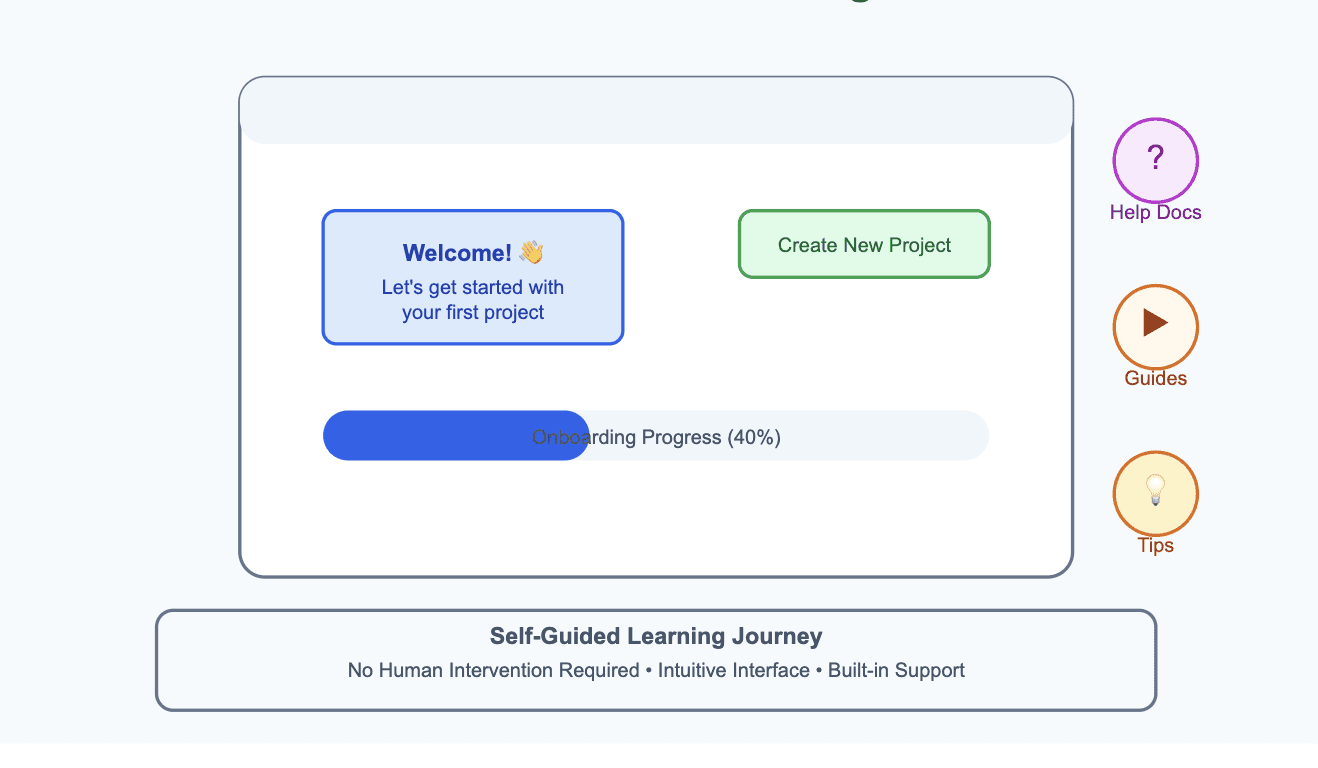
Self-serve onboarding refers to a process where new users can learn and adapt to a product without direct intervention from support teams or guided onboarding sessions. Instead, they are guided by built-in features such as tutorials, walkthroughs, tooltips, and an intuitive user interface that facilitates learning. Unlike high-touch onboarding methods that require extensive human interaction, self-serve onboarding maximizes user autonomy and aligns perfectly with the core PLG principle: letting the product drive growth.
Why Self-Serve Onboarding is Essential for PLG
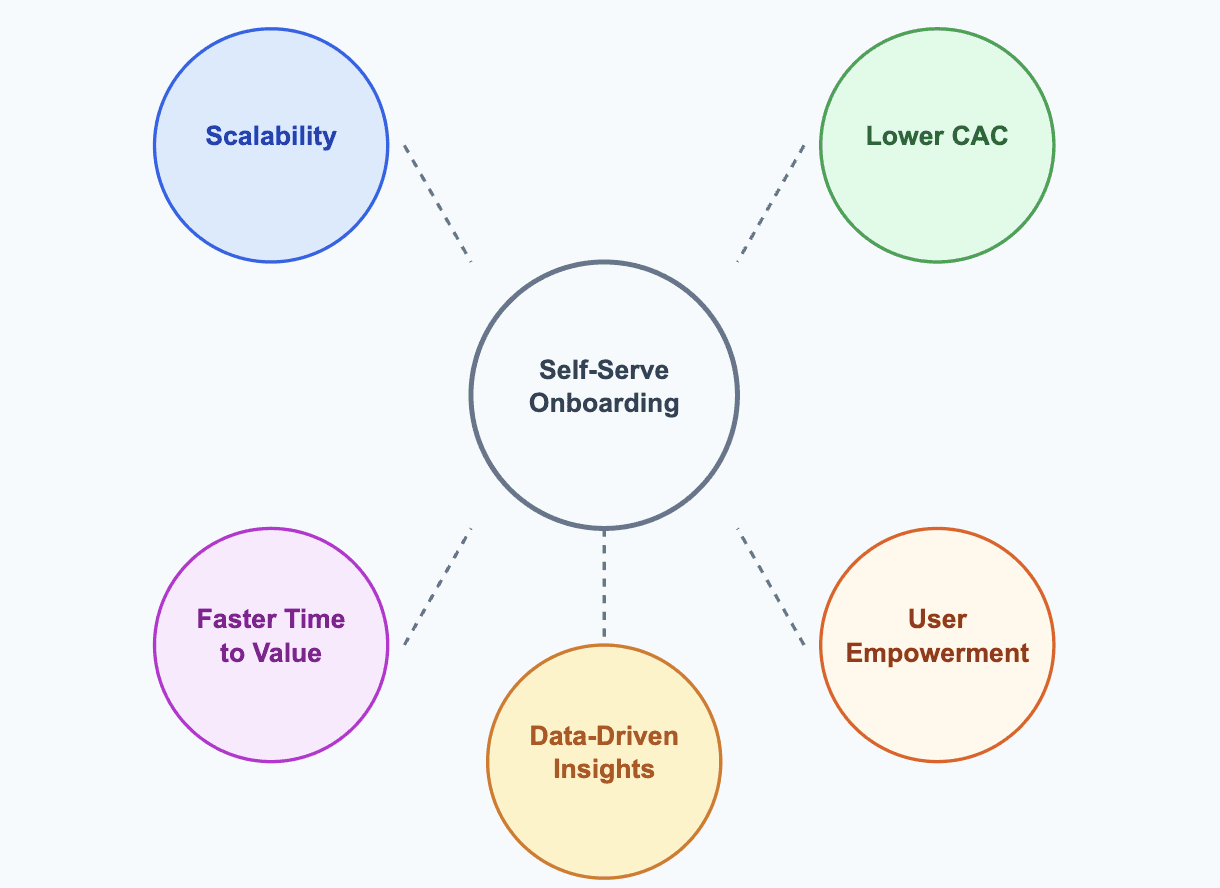
Scalability: One of the main benefits of self-serve onboarding is its scalability. Traditional, high-touch onboarding methods can be resource-intensive, as they require manual involvement from customer success teams to walk users through the product. This approach limits how many users can be onboarded at any given time. Self-serve onboarding, on the other hand, allows companies to scale their user base without increasing customer support resources proportionally. The onboarding process becomes infinitely repeatable, enabling a company to serve thousands or even millions of users simultaneously.
Lower Customer Acquisition Cost (CAC): In a competitive SaaS market, maintaining a low CAC is crucial for profitability. Self-serve onboarding minimizes the need for hands-on support, effectively lowering the costs associated with acquiring and onboarding new users. This efficiency means that PLG companies can funnel more resources into product development and marketing rather than expanding their customer success teams.
Faster Time to Value (TTV): In SaaS, the faster a user experiences the product’s value, the more likely they are to convert from a free trial to a paid subscription or become an engaged long-term customer. Self-serve onboarding is designed to get users to their ‘aha’ moment quickly—that point where they understand how the product solves their problem. By providing clear, step-by-step guidance and intuitive design, users can grasp key features and realize benefits sooner.
User Empowerment and Independence: Today’s users prefer to explore products on their own terms. Self-serve onboarding provides them with the autonomy they crave, enabling them to learn at their own pace without feeling pressured or rushed. This approach boosts user confidence, as they can experiment with different features and workflows in a low-pressure environment. Empowered users are more likely to become champions of the product, spreading positive word-of-mouth and advocating for it within their networks.
Data-Driven Product Insights: One of the most valuable aspects of self-serve onboarding is the data it generates. Companies can track user behavior during the onboarding process to see where users drop off, which steps they complete successfully, and which features they engage with the most. This data can provide actionable insights for optimizing the onboarding process and inform future product development. For instance, if analytics show that users frequently abandon the onboarding flow at a particular step, product teams can investigate and adjust that step to make it more intuitive or engaging.
Best Practices for Implementing Self-Serve Onboarding
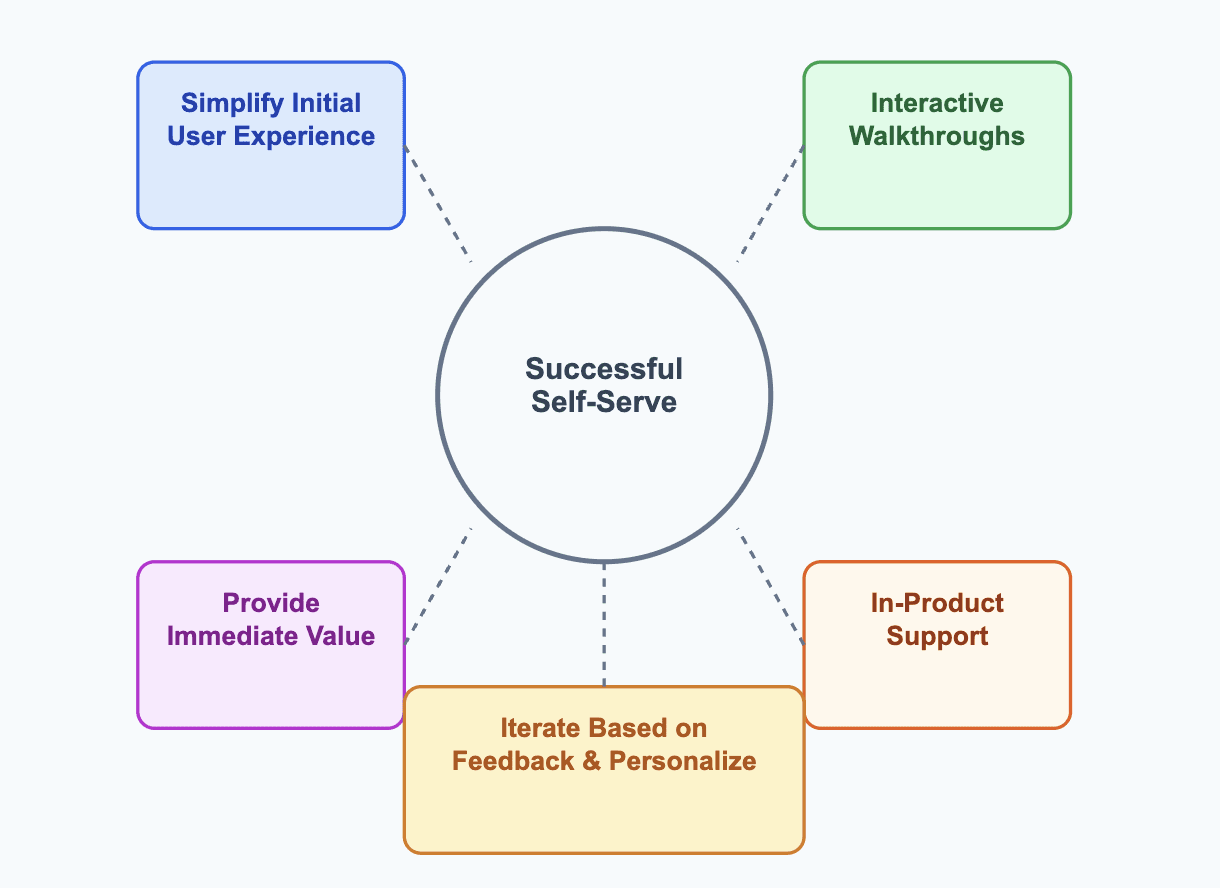
Simplify the Initial User Experience: The onboarding process should be as frictionless as possible. Avoid asking for excessive information during sign-up. Keep forms concise and only request essential details. The goal is to get users into the product quickly so they can start exploring and experiencing its core functionality.
Guide Users with Interactive Walkthroughs: Incorporate interactive tutorials, onboarding checklists, and contextual tooltips to guide users through important features. These tools should be informative but not intrusive. For example, a checklist can highlight key tasks a new user should complete to get the most out of the product, while tooltips can provide contextual help when a user interacts with specific elements for the first time.
Provide Immediate Value: Early exposure to the product’s value is critical. Design the onboarding flow to showcase impactful features right away. Users should understand what makes the product valuable within the first few minutes. This might involve pre-loaded templates, demo data, or sample use cases that allow users to see potential outcomes without having to start from scratch.
Offer In-Product Support: Even with the best self-serve onboarding flow, some users may still need assistance. Integrate resources such as a knowledge base, FAQ sections, or a chatbot that users can access without leaving the product interface. This ensures that users can find the help they need in real-time, reducing frustration and maintaining engagement.
Iterate Based on Feedback: The best onboarding processes are dynamic, not static. Regularly collect feedback from users and review onboarding metrics to identify areas for improvement. A/B testing different onboarding flows can also help pinpoint what resonates best with users. Metrics such as completion rates, user satisfaction surveys, and direct feedback should guide continuous refinement.
Personalize the Experience: Different users have different needs, depending on their role, industry, or use case. Tailor onboarding experiences to reflect these variations. For instance, a marketing professional might be guided through features that help create reports, while a developer might see tools for API integrations first. Personalizing onboarding pathways increases relevance, speeds up user understanding, and enhances engagement.
Real-World Example
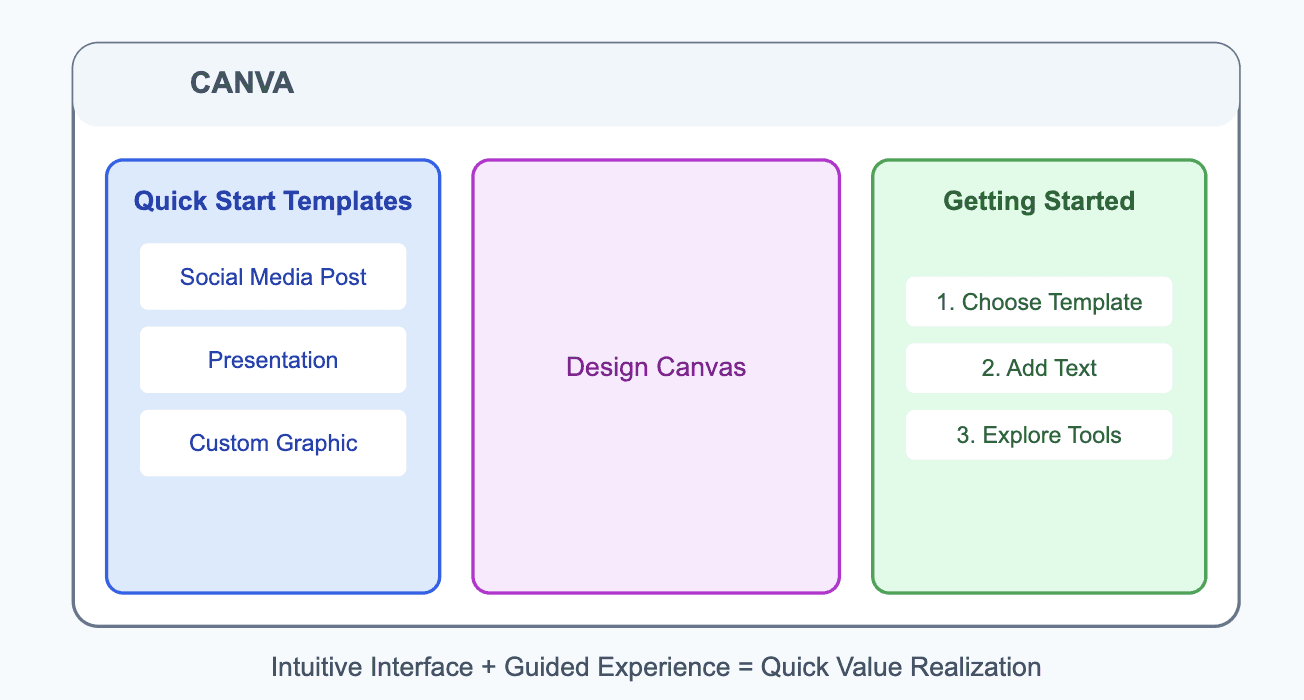
Canva is a prime example of a SaaS company that has mastered self-serve onboarding. When users sign up, they’re greeted with an intuitive interface that offers immediate options to start designing, whether it’s a social media post, a presentation, or a custom graphic. Canva’s interactive tutorials and pre-made templates make it easy for new users to create content without feeling overwhelmed.
One of the standout aspects of Canva’s onboarding is its checklist-style walkthrough, which encourages users to complete key tasks such as selecting a template, adding text, and exploring design tools. This approach ensures that users experience the platform’s core value quickly, boosting conversion rates and long-term retention.
Common Pitfalls to Avoid
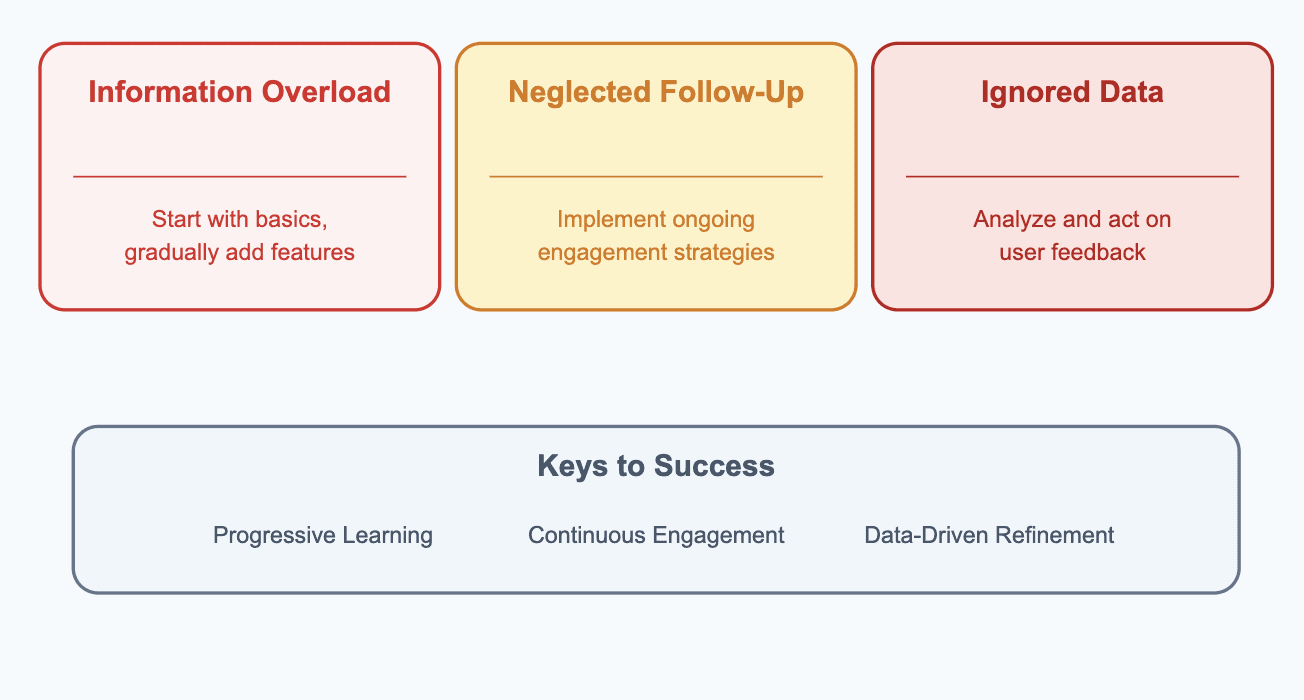
Overloading Users with Information: One of the biggest mistakes in self-serve onboarding is overwhelming users with too much information at once. A cluttered onboarding experience can lead to confusion and frustration. Start with the basics and gradually introduce more advanced features as users become more familiar with the product.
Neglecting Follow-Up Engagement: Onboarding shouldn’t be a one-time experience. Implement follow-up strategies such as drip email campaigns, in-app notifications, or milestone celebrations to keep users engaged and encourage further exploration of the product.
Ignoring Data and Feedback: Self-serve onboarding should be constantly evolving. Failing to analyze onboarding data or act on user feedback can result in a static experience that doesn’t meet user needs. Continuously refine the process based on data insights to optimize user outcomes.
Final Thoughts
Self-serve onboarding is an essential pillar of a successful Product-Led Growth strategy. It empowers users, reduces costs, and scales effortlessly as your customer base grows. By prioritizing a user-centric, data-informed approach, SaaS companies can accelerate adoption, boost retention, and create loyal advocates. In the competitive SaaS market, a well-executed self-serve onboarding process doesn’t just support users—it sets the foundation for sustainable, scalable growth.
When designed thoughtfully, self-serve onboarding transforms curious visitors into confident users who understand and champion your product. This seamless transition from exploration to adoption is what truly propels a PLG strategy forward, establishing a strong foundation for long-term success.





